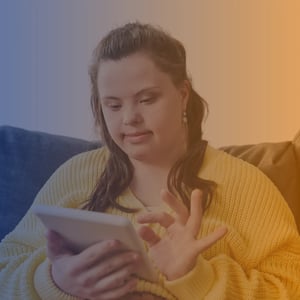
Stigma definition: what is stigma?
Home / DE&I glossary / Stigma definition
Stigma definition
The concept of stigma, in the context of social psychology, was defined in 1963 by a sociologist Erving Goffman. In his book, Stigma, Goffman referred to stigma as an “attribute that is deeply discrediting” and that may result in an individual being rejected by a wider society. Such attribute may be visible -such as one’s skin tone - or hidden, such as one’s state of mental health.
Goffman considered stigma to be a crucial part of one’s social life and suggested its presence in routine micro-level interactions. Goffman’s definition of stigma incorporates several discredited attributes, including “tribal stigmas” (e.g ethnicity), “physical deformities” (e.g. disability) and “blemishes of character” (e.g. mental ill health).
For example, one stigma that is still extremely prominent in the workplace is around mental ill health. Individuals with mental health conditions are sometimes unjustly accused as being dangerous, inept, unfocused, or impulsive due to the common misconception around mental ill health.
Real-world context
- Hiring process: Stigma may act as a barrier for hiring managers’ ability to hire talent, as without training, they may dismiss candidates based on the social stigma. In fact, studies suggest that almost two thirds of line managers would be reluctant to hire a candidate if they were aware of their mental health condition.
- Occupational health: Many employees with a behavioural-health condition say they would avoid treatment because they didn’t want their employer finding out about their mental illness, due to the stigma surrounding it. This lack of safe space creates a workplace environment that is potentially dangerous for people with mental health conditions.
- Productivity: Stigmatised employees may have a decreased sense of belonging in the workplace, which is also associated with lower workforce productivity. In addition, those with mental health conditions are more likely to skip work because of their condition instead of seeking support.
Related terms
Related services

Can’t find what you’re looking for?
Book a complimentary one-to-one consultation session with us and allow us to explore your specific needs in detail. We create bespoke solutions to ensure our strategies are aligned with your business’ goals.



